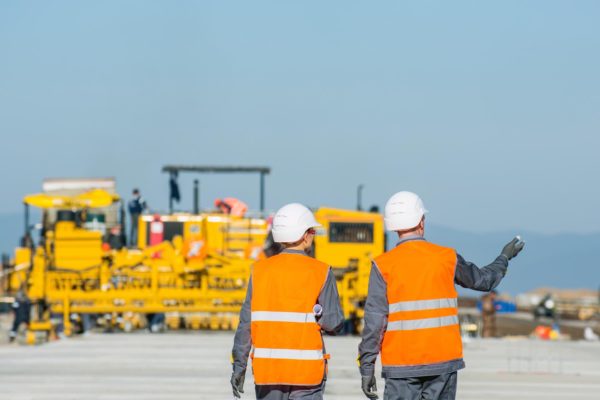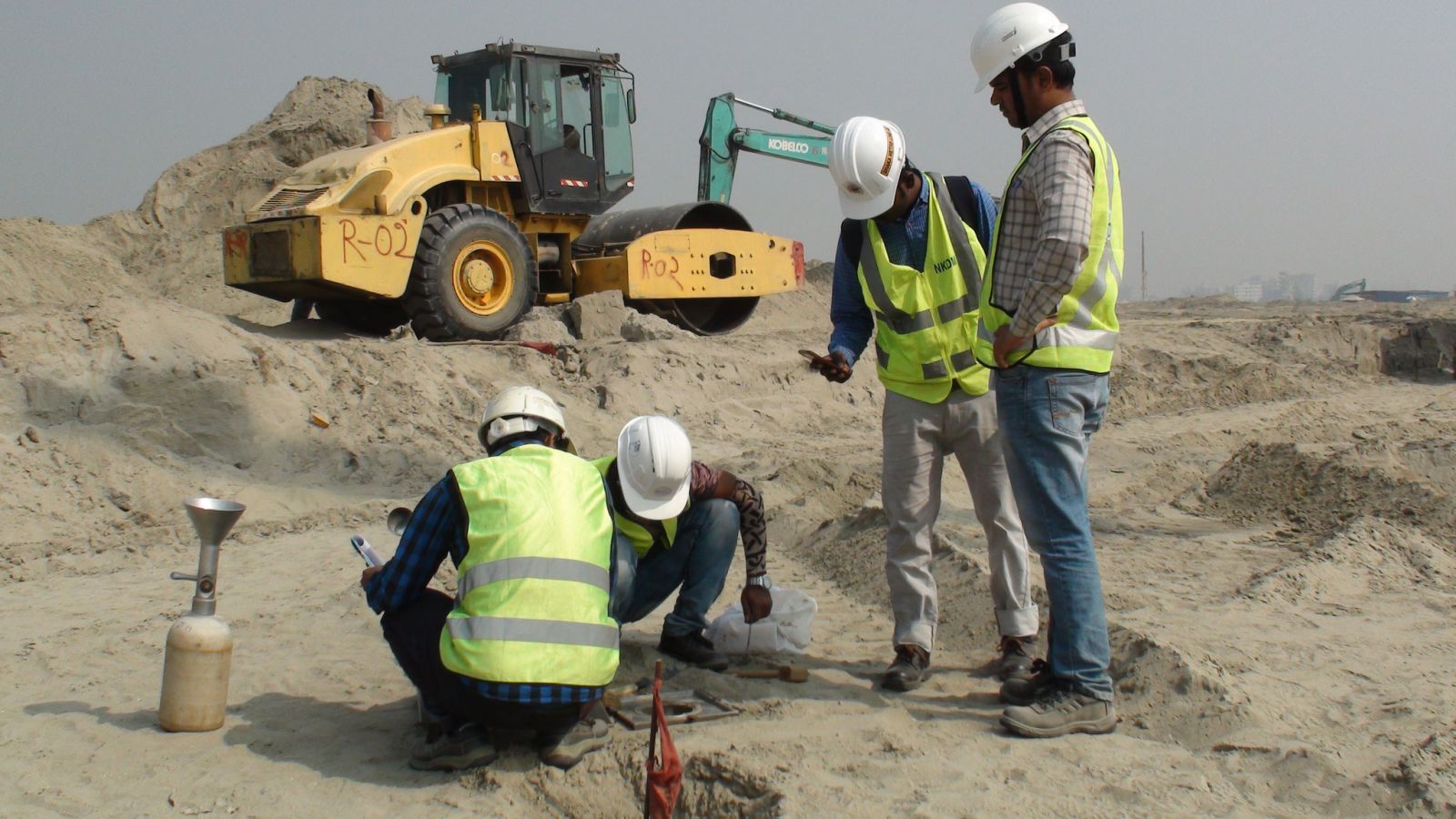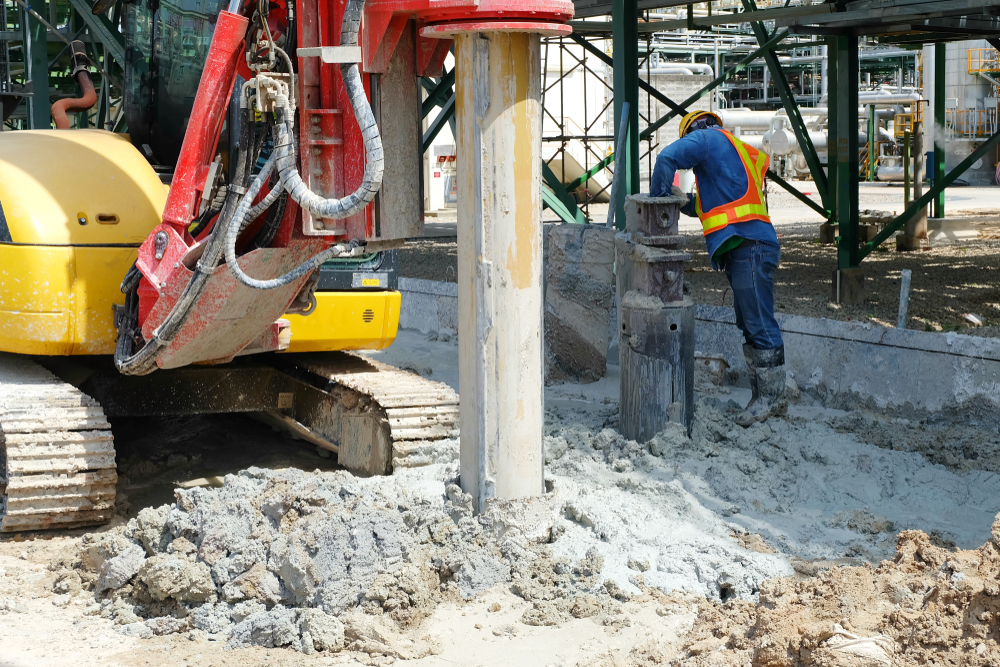Tailings Engineer: Essential Knowledge for Sustainable Waste Monitoring in Mining
Tailings Engineer: Essential Knowledge for Sustainable Waste Monitoring in Mining
Blog Article
Recognizing the Essential Duty of the Geotechnical Industry in Modern Construction Projects and Facilities Growth
The geotechnical industry is a keystone of modern-day building and infrastructure advancement, providing vital understandings into soil behavior that directly influence project outcomes. Through sophisticated soil evaluations and innovative design solutions, geotechnical professionals not only ensure structural integrity yet likewise address sustainability problems amidst advancing ecological requirements.
Value of Soil Analysis
Soil analysis plays a critical duty in the geotechnical sector, working as the structure for informed decision-making in construction jobs. Accurate soil assessment is crucial for identifying the suitability of a website for various sorts of frameworks, consisting of domestic homes, industrial structures, and bridges. By evaluating soil composition, strength, density, and wetness content, engineers can prepare for prospective challenges and reduce dangers connected with ground instability, erosion, and settlement.
The evaluation process normally involves a series of tests and monitorings that give crucial info regarding the subsurface conditions. This information educates the design and building procedures, making certain that structures are improved solid ground with ample support. Moreover, understanding the soil account enables engineers to pick ideal building methods and materials, maximizing source usage and reducing costs.
Along with guaranteeing structural honesty, dirt evaluation adds to ecological sustainability. By identifying possible contamination or adverse impacts on bordering ecosystems, designers can execute techniques to secure these all-natural resources. On the whole, detailed soil assessment is indispensable in the geotechnical field, underpinning the safety, performance, and ecological responsibility of construction jobs.
Trick Geotechnical Strategies
A selection of vital geotechnical methods are used to boost the security and analyze and efficiency of building sites. One fundamental technique is soil sampling and testing, which enables engineers to identify the physical and chemical buildings of the ground. This details is important for making notified decisions relating to structure design and construction techniques.
Another vital technique is site characterization, which entails the comprehensive assessment of dirt and rock conditions via approaches such as borehole drilling and in-situ screening. Methods like Standard Penetration Tests (SPT) and Cone Infiltration Examinations (CPT) offer useful data on dirt stamina and stratigraphy.
Ground renovation methods, such as dirt stablizing and grouting, are additionally crucial in boosting the load-bearing capability of weak dirts. These approaches can reduce negotiation and enhance general site problems.
Furthermore, slope stability analysis is essential for determining possible landslide dangers and ensuring the safety of excavations. This evaluation frequently employs mathematical modeling and limitation equilibrium methods to predict dirt behavior under different conditions.
Incorporating these geotechnical methods into building preparation not only optimizes task outcomes however also makes sure the long-term sustainability of infrastructure advancement.
Effect On Building Safety

In addition, efficient geotechnical design entails applying mitigation strategies for determined threats. This may consist of soil stabilization methods, keeping frameworks, or drainage systems to ease hydrostatic pressure. By addressing these elements, building groups can minimize the probability of crashes and enhance worker safety.
Furthermore, continual surveillance of website problems is critical during building and construction. Geotechnical tools can provide real-time information concerning ground motion and stability, allowing for timely interventions when essential.
In essence, the geotechnical sector plays a crucial you can check here role in safeguarding building and construction projects. By prioritizing ground stability and using extensive evaluation techniques, the geotechnical field not only secures the labor force yet additionally adds to the long life and reliability of constructed facilities.
Sustainability in Geotechnical Practices

Moreover, geotechnical designers are currently utilizing innovative modern technologies, such as geosynthetics, which improve dirt security while minimizing the quantity of material called for. This not just saves resources but likewise leads to less waste generation (engineer of record). The integration of lasting design concepts right into geotechnical engineering urges using renewable power sources in building processes, even more minimizing carbon exhausts
Furthermore, extensive website evaluations are crucial for determining potential ecological impacts prior to building and construction begins. By performing these analyses, geotechnical professionals can establish approaches that minimize adverse impacts, ensuring conformity with ecological regulations. On the whole, the emphasis on sustainability within geotechnical techniques not only contributes to the durability and resilience of infrastructure but additionally promotes a responsible technique to land you can try these out and source management. This dedication is vital for promoting sustainable advancement in the contemporary building landscape.
Future Trends in Geotechnical Design
Development is driving the future of geotechnical design, as emerging methods and innovations improve the industry. The assimilation of innovative information analytics and expert system is readied to transform site examination and threat evaluation, allowing designers to make even more enlightened choices based on real-time data. The usage of geosynthetic materials is obtaining traction, providing lasting services that enhance soil security and minimize ecological impact - engineer of record.
One more substantial trend is the fostering of automated and robot systems for surveillance and building processes. These technologies not only enhance precision yet also enhance safety by reducing human involvement in harmful atmospheres. In addition, the implementation of Building Info Modeling (BIM) in geotechnical layout promotes enhanced partnership among stakeholders, optimizing job distribution and minimizing expenses.
As environment change postures brand-new difficulties, the market is progressively concentrating on durability and versatility in design techniques, guaranteeing framework can hold up against severe weather occasions. Lastly, the ongoing fad towards sustainability will certainly drive advancement in environment-friendly materials and approaches, straightening geotechnical engineering with broader ecological goals. Jointly, these fads will certainly shape a more effective, sustainable, and resistant geotechnical landscape for future tasks.
Final Thought

The geotechnical industry is a cornerstone of modern construction and infrastructure advancement, providing critical understandings right into soil behavior that straight influence job results. geo tech engineer.Dirt analysis plays a crucial duty in the geotechnical industry, serving as the foundation for notified i was reading this decision-making in building projects. On the whole, thorough dirt assessment is indispensable in the geotechnical field, underpinning the safety, efficiency, and ecological obligation of construction tasks
Building safety and security is substantially affected by geotechnical practices, as the security and honesty of the ground directly affect the overall safety of a building and construction website.In final thought, the geotechnical sector is indispensable in contemporary construction and framework advancement, offering important analyses that ensure structural integrity and security.
Report this page